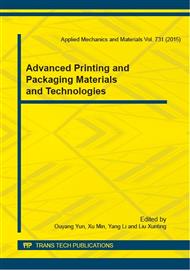p.385
p.389
p.395
p.401
p.407
p.411
p.416
p.420
p.426
Research on Drying System Based on the Lower Explosion Limit
Abstract:
In gravure printing process, it is easy to trigger an explosion for the explosive volatile solvents of drying system accumulated. In this paper, the lower explosion limit (LEL) is introduced to drying system of the gravure press, and the LEL value is calculated. Then added the LEL sensor to the drying system to monitor and control the concentration of gas in the solvent evaporation. Finally, the structure of the drying system is optimized. It is showed that the consumption of the steam is reduced sharply, the drying system has pronounced energy-saving effect, and operated more steadily and more efficiently.
Info:
Periodical:
Pages:
407-410
Citation:
Online since:
January 2015
Authors:
Price:
Сopyright:
© 2015 Trans Tech Publications Ltd. All Rights Reserved
Share:
Citation:


